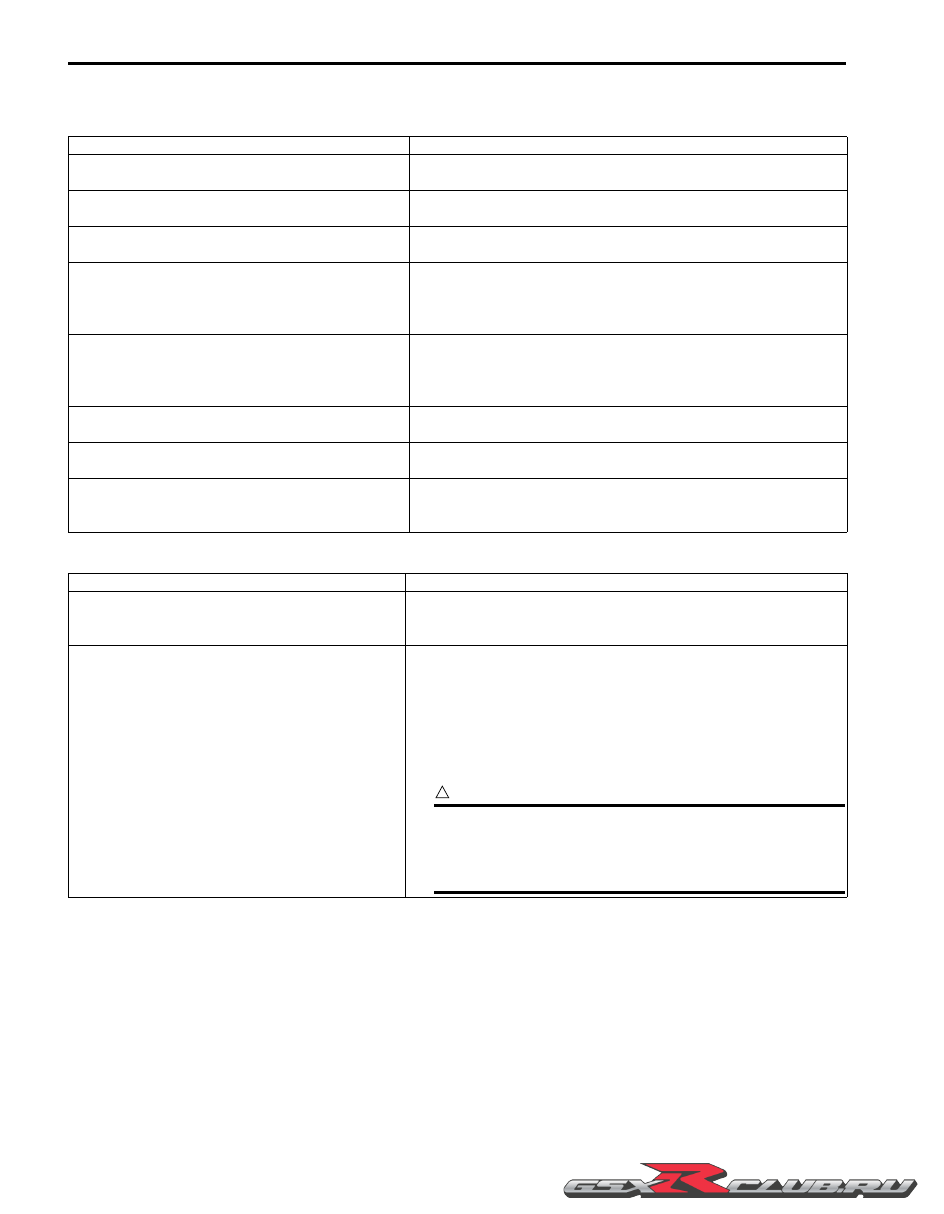Suzuki GSX-R1000. Service Manual - part 5

1A-2 Engine General Information and Diagnosis:
Compensation of Injection Time (Volume)
The following different signals are output from the respective sensors for compensation of the fuel injection time
(volume).
Injection Stop Control
Signal
Descriptions
ATMOSPHERIC PRESSURE SENSOR SIGNAL
When atmospheric pressure is low, the sensor sends the signal to
the ECM and reduce the injection time (volume).
ENGINE COOLANT TEMPERATURE SENSOR
SIGNAL
When engine coolant temperature is low, injection time (volume)
is increased.
INTAKE AIR TEMPERATURE SENSOR SIGNAL
When intake air temperature is low, injection time (volume) is
increased.
HEATED OXYGEN SENSOR SIGNAL
Air/fuel ratio is compensated to the theoretical ratio from density
of oxygen in exhaust gas. The compensation occurs in such a
way that more fuel is supplied if detected air/fuel ratio is lean and
less fuel is supplied if it is rich.
BATTERY VOLTAGE SIGNAL
ECM operates on the battery voltage and at the same time, it
monitors the voltage signal for compensation of the fuel injection
time (volume). A longer injection time is needed to adjust injection
volume in the case of low voltage.
ENGINE RPM SIGNAL
At high speed, the injection time (volume) is increased. This is the
compensation of the SRAD.
STARTING SIGNAL
When starting engine, additional fuel is injected during cranking
engine.
ACCELERATION SIGNAL/DECELERATION
SIGNAL
During acceleration, the fuel injection time (volume) is increased,
in accordance with the throttle opening speed and engine rpm.
During deceleration, the fuel injection time (volume) is decreased.
Signal
Descriptions
TIP-OVER SENSOR SIGNAL (FUEL SHUT-OFF)
When the motorcycle tips over, the tip-over sensor sends a signal
to the ECM. Then, this signal cuts OFF current supplied to the fuel
pump, fuel injectors and ignition coils.
OVER-REV. LIMITER SIGNAL
The fuel injectors stop operation when engine rpm reaches rev.
limit rpm.
The fuel cut-off circuit is incorporated in this ECM in order to
prevent over-running of engine. When engine speed reaches 13
500 r/min, this circuit cuts off fuel at the fuel injectors. But under no
load, the clutch lever is pulled or the gear position is in neutral, this
circuit cuts off fuel when engine speed reaches 13 100 r/min.
CAUTION
!
Under no load, the engine can run over 13 100 r/min
through the fuel cut-off circuit is effective, which may
possibly cause engine damage. Do not run the engine
without load over 13 100 r/min at anytime.